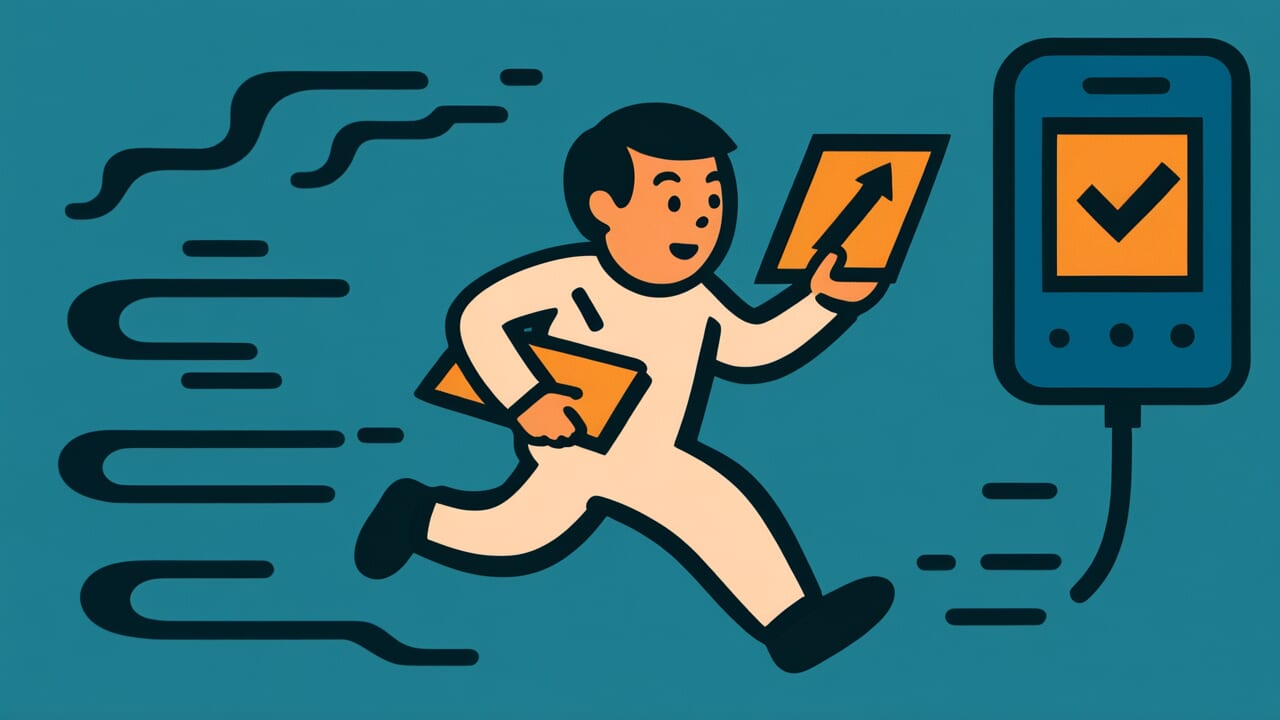How to Read “bad news travels fast”
Bad news travels fast
[bad nooz TRAV-uhlz fast]
All words use common pronunciation.
Meaning of “bad news travels fast”
Simply put, this proverb means that bad or unpleasant information spreads much faster than good news does.
The literal meaning is straightforward. When something negative happens, word about it moves quickly from person to person. People seem eager to share disappointing, shocking, or troubling information. Meanwhile, positive news often takes much longer to reach everyone, if it spreads widely at all.
This happens everywhere in daily life. If someone gets fired, the whole office knows by lunch. If a couple breaks up, friends hear about it within hours. Bad weather warnings spread faster than sunny forecasts. Scandals make headlines while quiet acts of kindness rarely do. The pattern shows up in workplaces, schools, neighborhoods, and social media.
What makes this wisdom interesting is how automatic it seems. People don’t usually plan to spread bad news faster. It just happens naturally. Most folks would say they prefer good news, yet they unconsciously help negative information travel at lightning speed. This contradiction reveals something important about human nature and how we process different types of information.
Origin
The exact origin of this specific phrase is unknown, though similar ideas appear in various forms throughout history.
The concept behind this proverb reflects ancient observations about human communication patterns. In times when news traveled by word of mouth, people noticed that alarming information moved faster than pleasant updates. Communities needed to share warnings about dangers quickly for survival. Good news, while welcome, rarely carried the same urgency.
This type of saying became common as societies grew larger and more connected. When people lived in small groups, everyone knew everything quickly anyway. But as towns and cities developed, the speed difference between good and bad news became more obvious. The proverb likely emerged from these everyday observations about how information flows through communities.
Fun Facts
The phrase uses the word “travels,” which comes from the Old French “travail” meaning “to work” or “to journey with effort.” This suggests that news requires work to move from place to place.
The structure follows a common pattern in English proverbs where abstract concepts like “news” are given physical properties like speed. This makes the idea easier to remember and understand.
Usage Examples
- Manager to colleague: “Half the office already knows about the layoffs even though we just decided an hour ago – bad news travels fast.”
- Parent to spouse: “The kids heard about grandma’s accident before I could even call them – bad news travels fast.”
Universal Wisdom
This proverb reveals a fundamental truth about human psychology and our relationship with information. Bad news travels fast because our brains are wired to prioritize potential threats over potential benefits. This mental shortcut helped our ancestors survive in dangerous environments where missing a warning could mean death.
The speed difference exists because negative information triggers our attention systems more powerfully than positive information does. When we hear something troubling, our minds immediately start processing it as a possible threat to ourselves or people we care about. This creates an urgent feeling that pushes us to share the information quickly. We feel compelled to warn others or seek their thoughts about the situation. Good news, while pleasant, rarely creates this same sense of urgency.
This pattern also reflects how communities bond through shared concerns. Spreading bad news serves a social function beyond just sharing information. It creates connections between people who now share knowledge about a common problem. It allows groups to prepare for challenges together. While this can lead to unnecessary worry or gossip, it also builds the social networks that help communities survive difficult times. The proverb captures this ancient tension between individual curiosity and collective survival needs.
When AI Hears
People treat information like money in a social marketplace. Bad news has higher value than good news. When someone shares bad news, they become important and useful. Others feel they owe the messenger for the warning. Good news doesn’t create the same social debt or urgency.
This invisible trading system runs automatically in human minds. People calculate social profits before sharing information. Bad news makes the sharer look connected and valuable. It creates instant social bonds through shared concern. Good news offers less social reward because it doesn’t make others dependent.
What fascinates me is how this creates perfect information networks. Humans built the ideal warning system without planning it. Bad news reaches everyone who needs it fastest. Good news travels slower but still spreads joy eventually. This seemingly unfair system actually protects communities while preserving happiness.
What … Teaches Us Today
Understanding why bad news spreads faster can help us navigate information more thoughtfully. When we hear something negative, we can pause before immediately sharing it. This doesn’t mean ignoring important warnings, but rather considering whether spreading the information actually helps anyone. Sometimes the urge to share bad news comes from our own anxiety rather than genuine concern for others.
In relationships and communities, recognizing this pattern helps explain why conflicts and problems seem to dominate conversations. People aren’t necessarily negative by nature, but their attention naturally focuses on potential threats and challenges. Making space for good news requires intentional effort. Families, friend groups, and workplaces often benefit from deliberately sharing positive updates and celebrating small victories that might otherwise go unnoticed.
The wisdom also suggests being careful about how we consume information, especially from news sources and social media. These platforms profit from our attention, so they naturally emphasize dramatic and troubling content. Understanding that bad news travels fast can help us seek out balanced perspectives and remember that negative events, while real and important, don’t represent the complete picture of what’s happening in the world. The challenge isn’t to ignore problems, but to maintain perspective about both difficulties and progress.



Comments